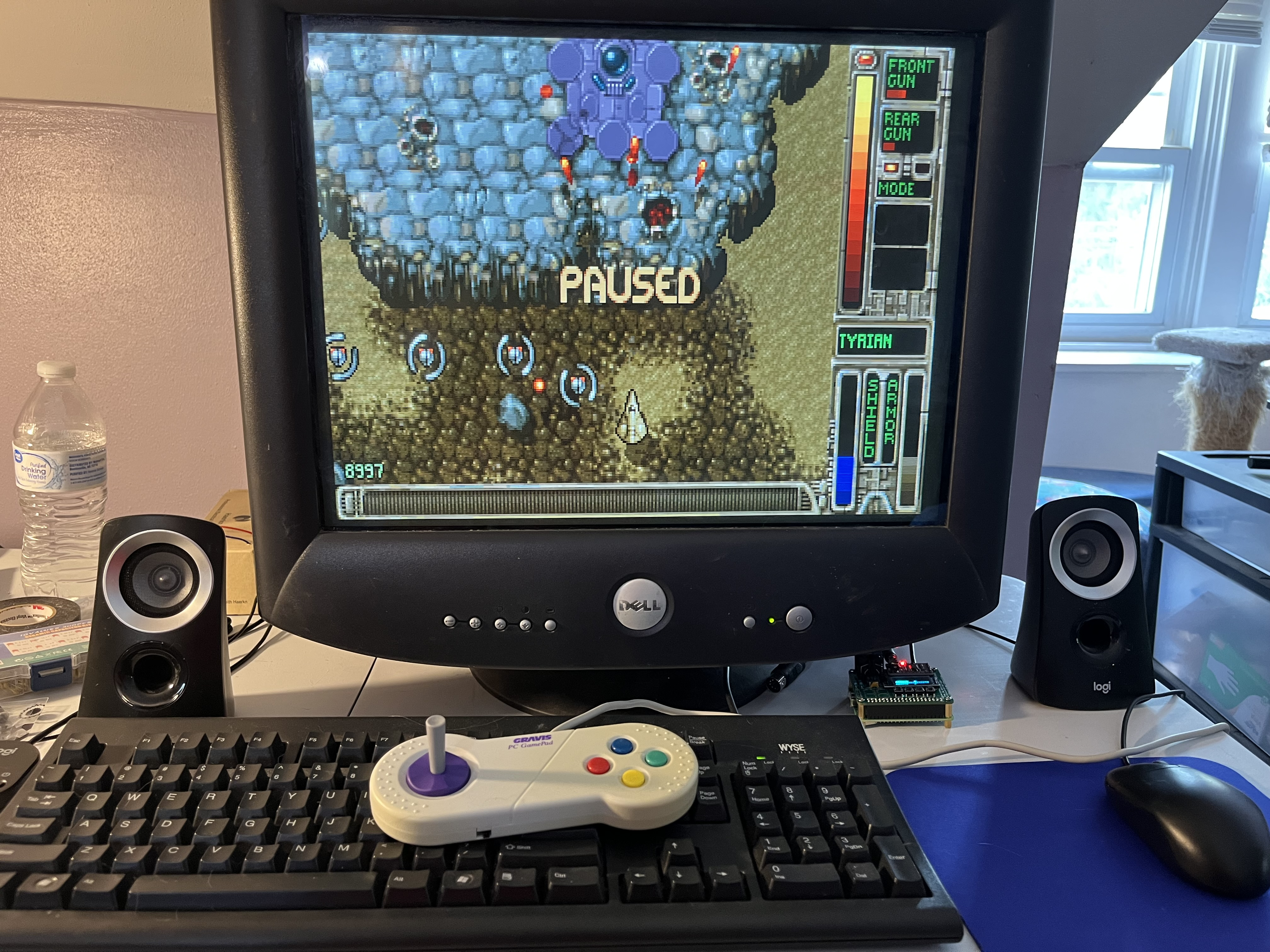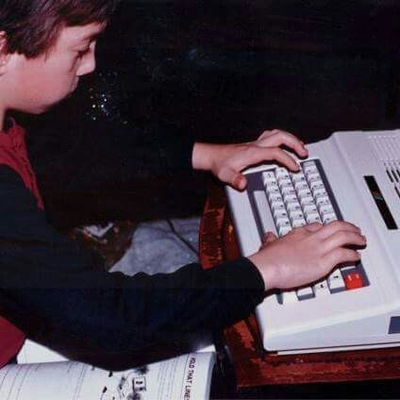Wanted to get back into the DOS era of software and games (it’s what I grew up on.) I would have preferred something older, but I ended up with a Slot 1 Pentium III/500. Fortunately it has an ISA slot so all the truly DOS friendly sound cards.
Specs: Gateway 4W4 Something Pentium III/500 384MB Yamaha YMF715 ISA sound card (SoundBlaster Pro and OPL3) S3 Trio 3D/2X AGP mt32-pi (Roland MT-32 and General MIDI) Generic Compact Flash-IDE adapter Gravis Gamepad that still has that little joystick you screw in. 20” Dell Trinitron (forgot the model)
Testing it with Tyrian here, but my plan is to play through Ultima Underworld soon on it.
What’s everybody else’s vintage computer of choice?

I grew up in an Apple household. This was way before it was cool. We had an LCIII (one of the ‘pizza’ box 68k Macs). I could only dream of having a 486 or Pentium machine like some of my friends had.
That said there were a couple old 68k Mac games I remember enjoying. Movod II comes to mind… I also remember some of my first experiences on the internet on those 68k Macs. Connecting to AOL with a USRobotics 28.8kbps modem… takes me back.
Sort of only half-vintage, but I built one of the homebrew8088.com PCB sets. Ended up filling up all ten slots:
- 20MHz-rated NEC V40, downclocked to 8MHz for compatibility (new build). The crystal is socketed and you can actually get it to limp through to a DOS prompt at 20MHz with enough wait states and a curated choice of cards.
- DMA controller addon card (new build)
- CH375 ISA-to-USB card (new but modified to support faster reads)
- Serial/HD floppy controller (new, kit-built)
- XT-IDE (new, kit-built)
- Combo I/O for parallel/game/two more serial (vintage)
- Clock Card (new, kit-built)
- RTL8109 NIC (NOS)
- RTL3106 SVGA card (vintage, got it used in like 1997)
- Custom SRAM memory card supporting 64k of ROM and filling any holes in the high memory space with UMBs. (new build, actually working on a new revision of the design)
It’s not 1000% IBM compatible, but the recent board revisions are pretty compatible with the most important features.
To me the iMac G3. Always and forever the iMac G3 with MacOS 8.6 or 9.2.2
I hope you do another post just on that Roland MT-32 - I’m still looking for one of those myself they were absolutely amazing.
Will do. That’s actually an mt32-pi, which is a Raspberry Pi based MT-32 emulator which works pretty much flawlessly and handles General MIDI as well.
https://github.com/dwhinham/mt32-pi
The mt32-pi has really taken off in the MiSTerFPGA community, so there’s less resources about using it with vintage hardware (or places to buy prebuilt ones that use a MIDI jack) but it works great for that.
Ah got you, I actually have one for my MiSTer - using it with real vintage hardware sounds amazing though. The prices of the real MT32’s are such that I can’t really justify getting one (well, until I find one at a good deal anyway :) ) Having a MT32-PI is nearly as good for a lot of cases though.
I’ve been using it for GM as well as mt-32. At least until I find a way to easily hook it and my X2GS waveblaster card up and manage the audio properly.
Someone on the SDF Mastodon got bent out of shape because I suggested a computer with those specs might be considered ‘retro’, haha.
Right now, the only retro machines I have accessible are my Tandy 1000TX and my C64, but my actual preferred machine for most things retrocomputing is one that I built out of a bunch of my spare parts:
Biostar M6TLC Slot 1 Motherboard PGA 370 Slotket 500MHz Mendocino Celeron PGA370 CPU 128MB of 168 pin SDRAM Sparkle SP5200 RIVA TNT2 Vanta AGP Soundblaster 16 CT2940 ISA 3Com Etherlink III ISA 1.44MB FDD, DVD-ROM, 20GB HDD Running MSDOS 7.1 (stripped from Windows 98SE)
The only picture I have of it was taken in the dark with a Mavica, so I won’t bother posting it, haha.
What makes hardware “retro” is certainly an interesting question. This machine is 24 years old, although I’m using it to recreate an experience closer to thirty years old.
At the same the Pentium III came out, the Apple II line would have been 22 years old. Was the Apple II considered “retro” in 1999? It was only six years discontinued at that point…
I think retro will invariably be the generation of computer the person in question used as a youth. Maybe.
This has come up a lot in the past, and the best I’ve been able to come up with is that what is “retro” varies with every retro enthusiast. A couple of definitions that I’ve heard:
- Retro is the computers you used as a kid. Leaves just about everything as “retro” to someone, but probably the best definition I’ve found anyway
- Any computer simple enough to be completely understood by an enthusiast. Older computers that came with full schematics fit into this category, and helps define the appeal of retro computers. It does leave out a lot of systems that younger generations would consider “retro” though.
- Some specific year cutoff (say 1990 or something.) Definitely the least flexible definition and one that I’m not a huge fan of.
- Based on architecture. 16-bit and older, or everything before the IBM PC etc. Again this isn’t a very flexible definition either, but has been used in the past by some (including by VCF-MW, though this has changed)
Yeah this is a hot debate in the Vintage Apple community as well. A lot of groups put the line at Intel Macs - anything PowerPC and older gets to count as vintage. That aligns with my interests but the first Intel Macs are soon 20 years old, and that cutoff is starting to make less sense if you look at what was accepted when the communities started out.
At this point personally I would personally consider anything from before Steve Jobs death as vintage Apple. Or at least anything from the Big Cats and before.




